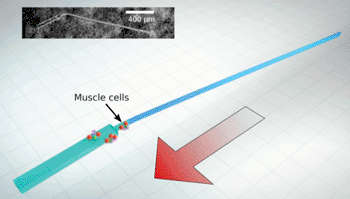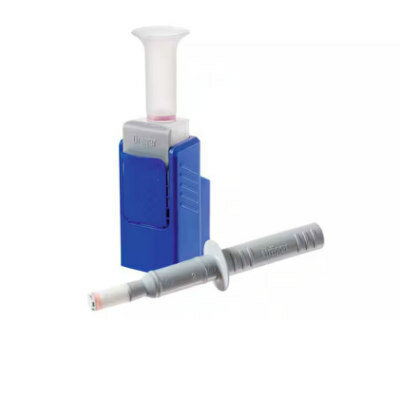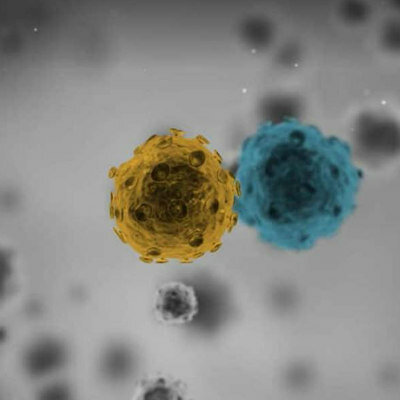Swimming Bio-Bots Designed to Traverse Biologic Aquatic Environments
By LabMedica International staff writers
Posted on 27 Jan 2014
Scientists have devised synthetic, tiny self-propelled swimming bio-bots that are able to move through the aquatic fluids of the body.Posted on 27 Jan 2014
A team of engineers has developed a type of tiny bio-hybrid machines that swim similar to sperm, the first synthetic structures that can traverse the viscous fluids of biologic environments by themselves. A report on the study led by Taher Saif, a University of Illinois (I of U; Urbana-Champaign, USA) professor of mechanical science and engineering, was published on January 18, 2014, in the journal Nature Communications. “Microorganisms have a whole world that we only glimpse through the microscope,” Prof. Saif said. “This is the first time that an engineered system has reached this underworld.”

Image: Engineers developed the first tiny, synthetic machines that can swim by themselves, powered by beating heart cells (Photo courtesy of Alex Jerez Roman, Beckman Institute for Advanced Science and Technology).
The engineers started by creating the body of the bio-bot from a flexible polymer. Then they cultured heart cells near the junction of the head and the tail. The cells self-align and synchronize to beat together, sending a wave down the tail that pushes the bio-bot forward.
This self-organization is an amazing new phenomenon, according to Prof. Saif; however, how the cells talk with each other on the flexible polymer tail is yet to be effectively determined. However, the cells need to beat together, in the right direction, for the tail to move. “It’s the minimal amount of engineering—just a head and a wire,” Prof. Saif said. “Then the cells come in, interact with the structure, and make it functional.”
The researchers also constructed two-tailed bots, which they found could swim even faster. Multiple tails also creates new avenues of navigation. The researchers foresee future bots that could sense or light or chemicals and move toward a target for medical or environmental applications. “The long-term vision is simple,” said Prof. Saif, who is also from the Beckman Institute for Advanced Science and Technology at the U of I. “Could we make elementary structures and seed them with stem cells that would differentiate into smart structures to deliver drugs, perform minimally invasive surgery or target cancer?”
The swimming bio-bot project is part of a larger US National Science Foundation-supported Science and Technology Center on Emergent Behaviors in Integrated Cellular Systems, which also produced the walking bio-bots developed at Illinois in 2012.
“The most intriguing aspect of this work is that it demonstrates the capability to use computational modeling in conjunction with biological design to optimize performance, or design entirely different types of swimming bio-bots,” said center director Dr. Roger Kamm, a professor of biological and mechanical engineering at the Massachusetts Institute of Technology (MIT; Cambridge MA, USA). “This opens the field up to a tremendous diversity of possibilities--truly an exciting advance.”
Related Links:
University of Illinois














